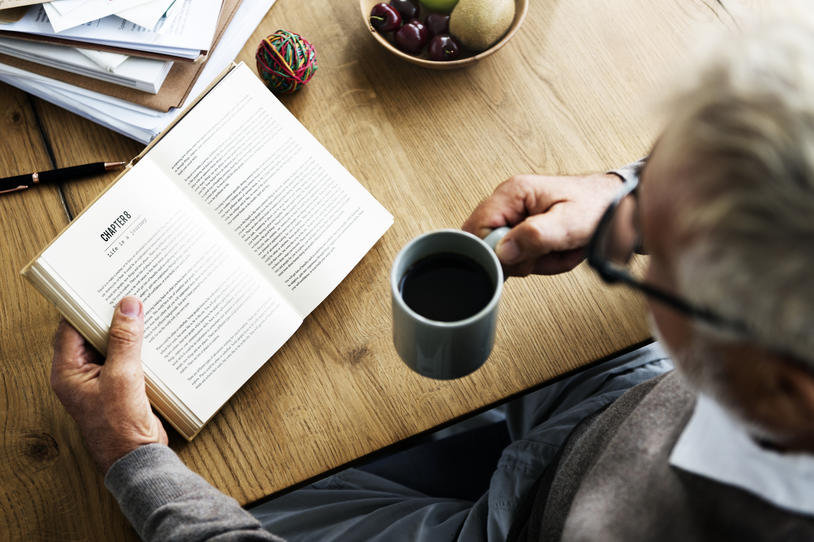
The following story appeared in our Spring/Summer 2020 edition of The Fox Focus on Parkinson’s newsletter. For this story and more, download the full edition.
During these uncertain times with coronavirus (COVID-19), many of us, both with and without Parkinson’s or mood changes, are experiencing worry and fear. What can we do to manage? “Adding structure, rituals and novelty can limit anxiety and make up for a lack of usual activities and spontaneity,” says Mark Groves, MD, assistant clinical professor of psychiatry and neurology at Icahn School of Medicine at Mount Sinai Beth Israel in New York. Amy Chesire, LCSW-R, MSG, a licensed clinical social worker at the University of Rochester in Rochester, New York, who works with the Parkinson’s community, adds, “Focus on the present. Try to find moments of gratitude, joy and humor that can ground you in the here and now, especially when anxiety sets in.”
More expert tips for easing mood changes and lessening isolation:
- Build structure in each day and week.
Bookend your day with relaxing activities, such as an hour to journal, meditate (check smartphone apps or online courses for free guided instruction) or drink coffee in the morning, and an hour to wind down (no news, no phone) before bedtime. Schedule lunch, coffee breaks, and virtual dinners or cocktail hours with friends. Plan video sessions with a personal trainer or online boxing classes several times a week. - Maintain social ties.
Take advantage of FaceTime, Zoom or other technology to connect with people face-to-face. Set up game or movie night with friends, family and loved ones. Plan phone calls. Join an online group sing-along. Technology offers a variety of ways to stay in touch, reconnect and make new connections. - Reframe the situation.
Try to think more about what you can do rather than what you can’t. Maybe now you have time for a project you’ve put off, such as decluttering and organizing your apartment, making photo albums of your travels or important life events, or watching Oscar-winning films from the ‘40s and ‘50s. Even with the limitations of social distancing and working from home, there are many ways to adapt, and being proactive chips away at feelings of helplessness. - Decide how to stay informed.
Be aware of how much COVID-19 information you are consuming and whether this is serving you and other family members. Choose which sources to follow, when to access them (maybe twice a day instead of throughout the day) and how much time you spend on them. The Centers for Disease Control and Prevention (CDC), World Health Organization (WHO), and your city and state health department websites are credible and accurate sources. - Make time for yourself.
Take some time to care for you (and only you) each day. Schedule it so it’s a priority. Maybe it’s 10 minutes to drink tea and gaze out the window in the afternoon or a half hour at night for a relaxing bath. It’s also important for partners who now find themselves together more often to discuss how to have time apart. Adjusting sleep schedules or taking breaks in different rooms may help. For care partners, stay in touch with online support groups and, if helpful, a mental health care provider. And don’t feel guilty. Many of us are managing increased and unplanned time together, which can feel stressful. - Focus on the present.
Find simple ways to keep joy and humor in each day. Start each day by acknowledging what you are grateful for and use that throughout your day to "pull yourself back to the moment" when anxiety sets in. Try to avoid feeling the need to fix, control or manage what can feel overwhelming and unmanageable. - Reach out to your clinician.
Many therapists, mental health care providers and movement disorder specialists are available virtually during this time. Phone, email and other technologies are great connectors. Social workers also are a great source of support – to listen, offer guidance, and direct to online or local resources. - Help someone else.
Many care partners offer help day in, day out. But for those of us who don’t have a full-time job caring for someone else, one of the best ways to get out of our own heads or worry spiral is to help someone else. This can be as simple as checking on a neighbor, giving an out-of-work friend a boost, or donating to a charity that supplies meals to people in need.
For more about Parkinson’s anxiety and depression, read our webpage or watch our webinar.
For more tips and information on Parkinson’s and COVID-19, read our blog and watch our webinar. And stay tuned to our social channels for ways to share how you and your family are managing this unprecedented time.
